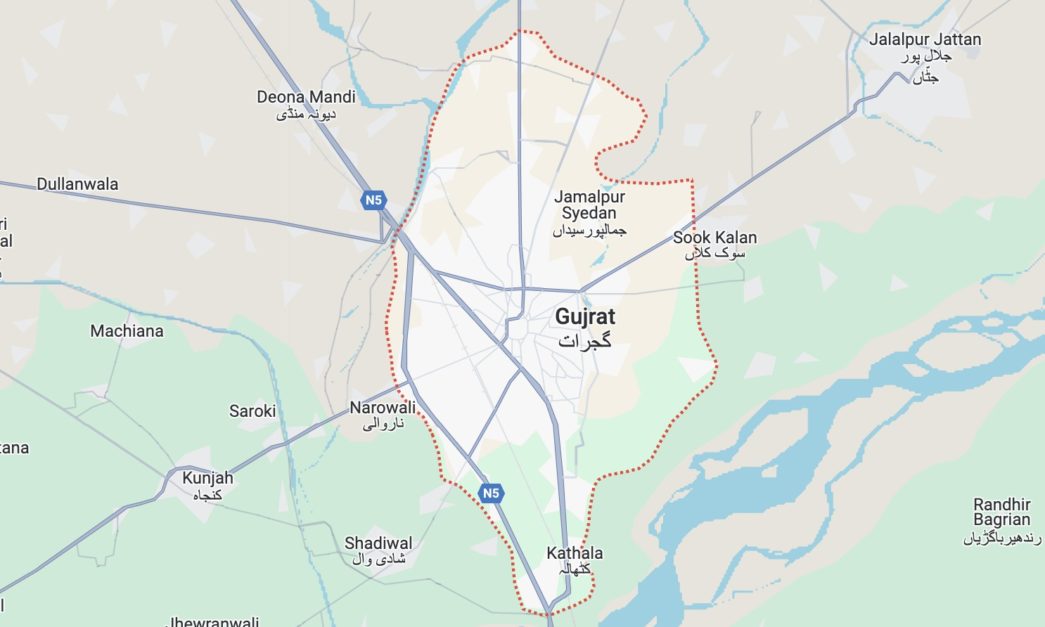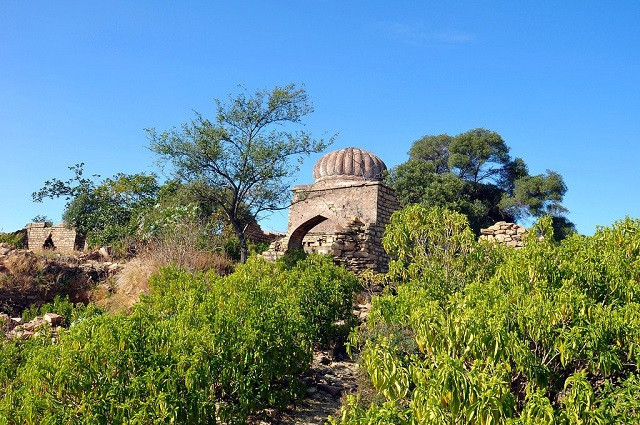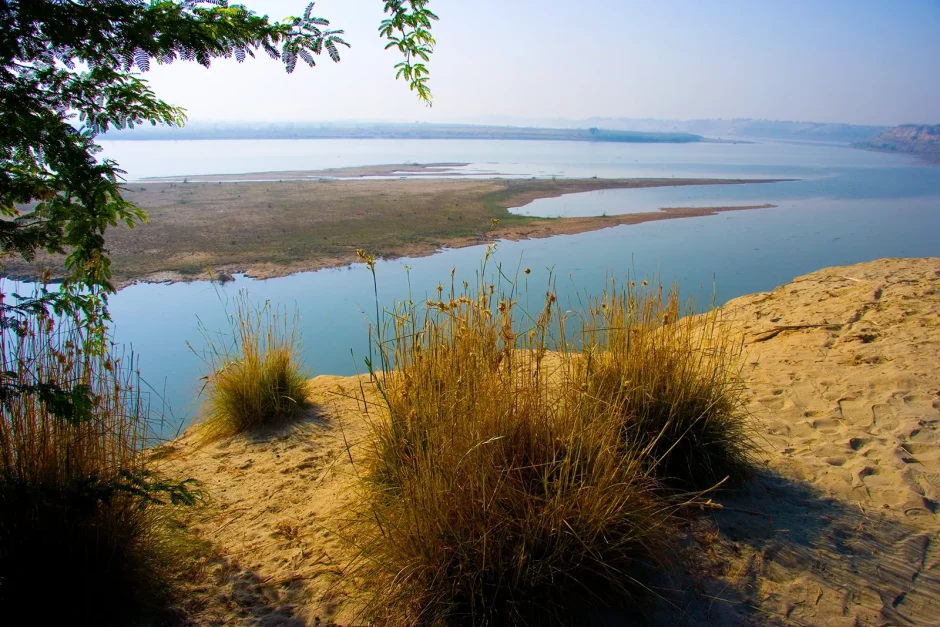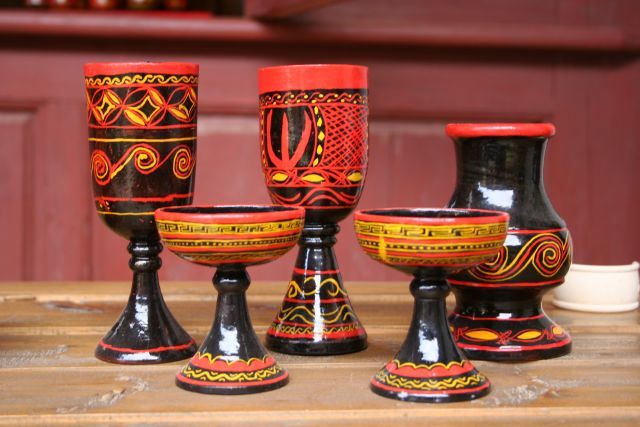The city of Gujrat is found in Punjab province. In addition to being a significant cultural and agricultural hub, it is an industrial powerhouse. The city has a rich history and a diverse culture, having been inhabited for millennia.
In this blog, Graana.com will offer a thorough overview of Gujrat, including information on its attractions, dining scene, shopping opportunities, outdoor pursuits, lodging, and transit.
Location

Gujrat is located 120 kilometres from Lahore and 174 kilometres from Islamabad, on the banks of the river Chenab. Rice and sugarcane are the primary crops of the city, which is blessed with fertile ground between the Jhelum and Chenab rivers. The borders of Gujrat are:
- Kashmir and Jammu lying in the Northeast
- Jhelum River towards the Northwest
- Chenab River, located in the east and southeast, divides it from the districts of Gujranwala and Sialkot
- In the west is located the district of Mandi Bahauddin
Key Features of Gujrat
| Name of District | District Gujrat | ||
| District Headquarter | Gujrat City | ||
| Population | 2,756,110 persons | ||
| Area | 3,192 km2 | ||
| Tehsils | 3 Tehsils:
1. Gujrat 2. Sarai Alamgir 3. Kharian |
||
| Main Towns | Sarai Alamgir, Gujrat, Kharian, Jalalpur Jatian, Lala Musa, Dinga, Sabour, Jhandewal, Sangrana, Daulat Nagar, and Khoja | ||
| Literacy Rate | 75% | ||
| Major Economic Activity | Elementary Occupations | 36.3% | |
| Agriculture with its Allied Livestock Breeding, Fishing etc. | 29.5%
|
||
| Service Workers And Shop/Market Sales Workers | 11.6% | ||
| Craft & Related Trade Workers | 7.2% | ||
| Others | 15.4% | ||
| Main Crops | Wheat, sugarcane, rice, tobacco, maize, jowar, bajra, Maash, moong, masoor, linseed, gram, oil seeds such as rapeseed & mustard, sunflower, groundnut, guar seed, sesamum, sun hemp, and fodder | ||
| Major Fruits | Guavas, Citrus, mango, banana, Jamun, ber, and mulberry | ||
| Major Vegetables | Turnips, cauliflower, potatoes, peas, carrots, okra, brinjal, bottle gourd, peas, garlic, chilies, bitter gourd, onions, spinach, and cabbage | ||
| Industrial Estates | 1 Industrial Estate and 703 small, medium, and large-sized industrial units. | ||
| Major Industry | Fans/Coolers | 345 Units | |
| Pottery | 128 units | ||
| Rice Mills | 41 Units | ||
| Foundry Products | 30 Unit | ||
How to Reach Gujrat?
Following are some of the ways to reach Gujrat, Punjab.
By Car
Gujrat is situated along the Grand Trunk Road (N-5), the principal thoroughfare that links Karachi, in the south, and Peshawar, in the north. Upon arriving in Gujrat from Islamabad or Lahore, one can proceed via the M-2 motorway to the Lahore-Islamabad Motorway Interchange. From there, one can proceed south on the N-5 National Highway.
By Train
The Gujrat Junction Railway Station is located on the Karachi-Lahore railway line. At Gujrat, trains arrive from all of Pakistan’s major cities.
By Plane
Sialkot International Airport (SKT), which is roughly 41 kilometres away, is the closest airport to Gujrat. Daily flights are operated by Sialkot International Airport from most Pakistan’s largest cities as well as from regional hubs in the Middle East and Central Asia. To travel to Gujrat, you can rent a car or take a cab from the airport.
Here are a few useful tips for going to Gujrat, Pakistan:
- If you are travelling from outside the country, you will require a Pakistani visa.
- When the weather is warm, spring (March-May) or autumn (September–November) are the ideal seasons to visit Gujarat.
- Since there will be a lot of walking involved, make sure to bring comfortable shoes.
- In Pakistan, most stores and marketplaces expect haggling.
Topography of Gujrat, Punjab
A low range of hills known as the Pabbi Hills, which continue the Salt Range, divides the district’s northernmost region, Plain Country, from Jhelum. 1,400 feet is the highest peak (427 metres).
Geographically, there are four zones that make up the district:
Sub-mountainous zone
This is the Himalayan foothills’ lowest slope. The Pabbi hills, a low range crossed by the River Jhelum at Mong Rasul (now in Mandi Bahauddin), run across the district’s northern portion.
The Salt Range is continued by these hills. At its highest point, they are 427 metres above mean sea level (MSL), or roughly 183 metres over the Plain that surrounds them. Water from the Pabbi hills is brought to the area by several streams.
The low-lying ground frequently benefits from the fertile silts that all these streams or hill torrents carry into the Plains during the rainy seasons, depositing the heavier sand first and the lighter silt further up.
The Central Plateau of Bar
A high, rolling sub-montane plateau stretches from Dinga, which is situated between the Chenab and Jhelum rivers, to the district’s western boundary, both below and surrounding the hills.
This bar ends in a steep slope that nearly overhangs the waters of the Rivers Tawi and Chenab, ranging in height from 30.5 to 61 metres.
A lowland strip measuring roughly 13 km in width is situated beneath a high bank that forms the base of the plateau. The district is traversed by an upland belt. This creates the Chenab’s broader valley.
Old Riverbeds
The low-lying areas have gotten a lot of silt from the high former riverbed of the Chenab in the Gujrat tehsil. The area also has the former Jhelum riverbed.
Fringes of the District
These cover a wide region and are subject to river action.
Climate of Gujrat
In the following section you will find a detailed breakdown of the climate of Gujrat:
Hot Summers
When summer temperatures are at their highest, in June, July, and August, they can reach 45°C. Fortunately, the district’s proximity to the Azad Kashmir mountains means that these heatwaves are shorter. June is the hottest month, with average high temperatures of 41°C and low temperatures of 26°C.
Pleasant Winters
The clear, dry winters provide a pleasant break. Sometimes the temperature drops below 2°C. The coolest month is January, with average highs of 20°C and lows of 5°C.
Varied Rainfall
The district has different patterns of rainfall. The highest annual rainfall (more than 1000 mm) is experienced in the areas that border Kashmir; Kharian receives about 750 mm, Gujrat receives 670 mm, and Dinga receives 500 mm. The region receives 850 mm of rain on average per year.
Tourist Places in Gujrat, Pakistan
- Tilla Jogian
- Darbar Mohri Sharif
- Chenab River
- Eid Gah Gujrat
- Ram Pyari Mahal
Tilla Jogian

One of the few grand, pre-partition structures in Gujarat that exemplifies a timeless and seductive fusion of Greek and Roman architectural codes is Ram Pyari Mahal. In the second decade of the 20th century, Sundar Das Chopra, a contractor from Dingah Town, around 55 kilometres from Gujrat, built this building for his beloved wife, Ram Pyari. She was his third wife.
Originally called Ram Pyari Road, the road presently passes by the building is now called Circular Road and goes by the Walled City’s Shoni Bazaar, which is home to pottery and ceramics.
Darbar Mohri Sharif
One of the few grand, pre-partition structures in Gujarat that exemplifies a timeless and seductive fusion of Greek and Roman architectural codes is Ram Pyari Mahal.
In the second decade of the 20th century, Sundar Das Chopra, a contractor from Dingah Town, around 55 kilometres from Gujrat, built this building for his beloved wife, Ram Pyari. She was his third wife.
Originally called Ram Pyari Road, the road presently passes by the building is now called Circular Road and goes by the Walled City’s Shoni Bazaar, which is home to pottery and ceramics.
Chenab River

The Chenab River is a stunning natural feature that passes through the city of Gujrat. Tourists can enjoy the breathtaking scenery of the surrounding area by taking a boat trip on the river. passes through the Pakistani city of Gujrat in the Punjab province.
Eid Gah Gujrat
Located in the centre of Gujrat, in the Punjab region of Pakistan, Eid Gah Gujrat is an open-air mosque or prayer area. Muslims congregate in this spacious area for special congregational prayers on holy days like Eid al-Fitr and Eid al-Adha.
Address: Chah Sultan, Gujrat, Eid Gah Gujrat, Punjab, Pakistan.
Regional and Cultural Food
For those who enjoy discovering delectable cuisine, Gujrat is a sanctuary. The city has a thriving street food scene with mouthwatering combinations of flavours and spices.
Tawa chicken, Dahi Bhalla, and Channa chaat are must-try regional specialities. Gujrat has a wide selection of top-notch eateries that serve delicious continental and Pakistani food, appealing to a wide spectrum of palates. For a wonderful dining experience, think about hip places like The Food Factory, The Lounge, or Cafe De Jour.
Shopping Places and Local Bazaars
Gujrat provides a great shopping experience for anyone looking for one-of-a-kind handcrafted goods. Look around neighbourhood markets to find exquisite pottery, terracotta vases, and the recognisable “hukkahs”.
Additionally, there are lovely handicrafts created from the leaves of palm trees. It is necessary to consider cultural sensitivity when exploring Gujrat. Certain parts of Pakistan, which have a large Muslim population, might not allow Western visitors.
Go outside to Gujrat for a more in-depth look into history. Sahiwal also provides an insight into the Indus Valley Civilisation, an intriguing period in South Asian history.
Culture of Gujrat
Gujrat has a rich cultural past that is reflected in its lasting customs and artistic productions.
Crafts

The city is well known for its ceramics and low-temperature pottery. Beautiful flowerpots, ornate hukkahs (water pipes), and decorative items are made by skilled artisans. Their skills also include making cozy cotton friends and woolen shawls, as well as changairian mats made from the leaves of palm and date trees.
A Love Story for the Ages
The fabled Punjabi folktale of Sohni Mahiwal features a major role for Gujrat. The lovely lead character, Sohni, was from this area. Punjabi culture still revolves around the story of her love for Mahinwal and their dangerous encounters across the Chenab River on a clay pitcher.
Honouring Saints and Shrines
Gujarat holds its spiritual leaders in high regard. An annual large-scale fair is conducted in August close to Karuan Wala to honour the saint Kanwan-Wali Sarkar’s birthday.
A legend describes a miracle wherein, throughout his lifetime, well water turned into milk. The well is still in place, and the fact that the fair usually falls during the heaviest monsoon rains is significant to the inhabitants.
In a similar vein, the city close to Shahdola Choki is home to the shrine of Hazrat Shahdola, another revered saint. Every June, he has a passionate celebration of his anniversary.
Looking Ahead
These are but a few impressions of the rich cultural environment of Gujrat. Explore further to find a wealth of stories, rituals, and traditions that contribute to this city’s distinct personality.
History of Gujrat
With a millennium-long history, Gujrat has much to offer. According to prehistoric records, this area was a thriving hub for the Indus Valley Civilization (3300–1300 BCE).
Strong empires like the Guptas (320–550 CE) and Maurya’s (322-298 BCE) made their imprint. Following that, the area saw the birth and fall of Rajput dynasties, leading up to the magnificent Solanki kingdom (960–1243), which promoted trade and the arts.
The Delhi Sultanate exerted dominance in the thirteenth century and was succeeded by the autonomous Gujarat Sultanate (1407–1573), renowned for its marine commerce and artistic magnificence.
A brief era of relative peace was brought about by the Mughals (1573–1756 CE), and then the Marathas briefly held power (1718–1819 CE). British dominion lasted from the 19th century until 1947, when Gujarat became an independent part of India.
FAQs on Gujrat
Following are some of the top FAQs on Gujrat.
Famous for?
For handcrafted ceramics, pottery, and textiles, Gujrat is a shoppers’ dream come true. Its fabled folktale of Sohni Mahiwal and its forts are testaments to its rich historical background.
Cultural Gem?
Gujrat is home to stunning sites like Hazrat Shahdola and hosts yearly fairs honouring its Sufi saints. The rich tradition of the city is exemplified by its low-temperature ceramics and the Sohni Mahiwal folktale.
This was all about Gujrat, for more information, visit Graana.com.




